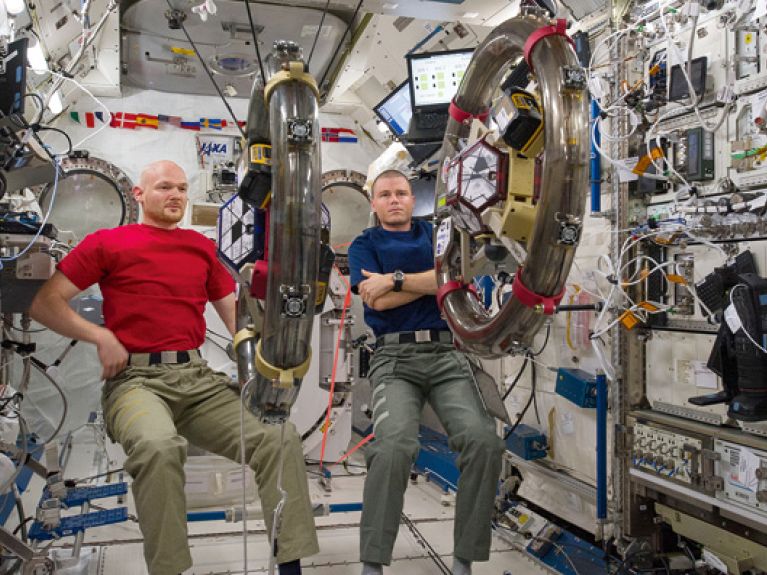Cooperation in space
The space agencies of Europe, Canada and the United States are linked by the past and the future.

When Alexander Gerst, the German astronaut from the European Space Agency (ESA), and Reid Wiseman, the U.S. astronaut from NASA, conduct joint research on board the International Space Station (ISS), it marks the culmination of decades of European-American collaboration in space. The first milestone was passed in 1973 when the ink dried on the Spacelab Memorandums between NASA and ESRO, ESA’s predecessor organization.
Ten years later saw the virgin flight of the European Spacelab: Ulf Merbold was the first foreign astronaut on board a U.S. space shuttle. During the mission he and his five U.S. colleagues completed an extensive program of research in the Columbia space shuttle and the integrated Spacelab module. 1990 marked another breakthrough, when the Hubble space telescope, another ESA-NASA joint venture, began monitoring alien solar systems. In 2004 and 2006, the telescope recorded the first direct images of an exoplanet in visible light. Only recently, Hubble discovered water vapor in the atmosphere of HAT P-11b; it is now the smallest planet to have been discovered outside our solar system that has water. In 2018, Hubble is planned to be followed by the James Webb Space Telescope, a joint project by NASA, ESA and the Canadian Space Agency, on which they have been collaborating since 1996. There are also firm plans for manned spaceflight. The NASA Orion space capsule is scheduled to launch in 2017, initially for an unmanned trip. The plan is for Orion to transport astronauts deeper into space than ever before – using a propulsion module based on Europe’s Automated Transfer Vehicle. ▪

